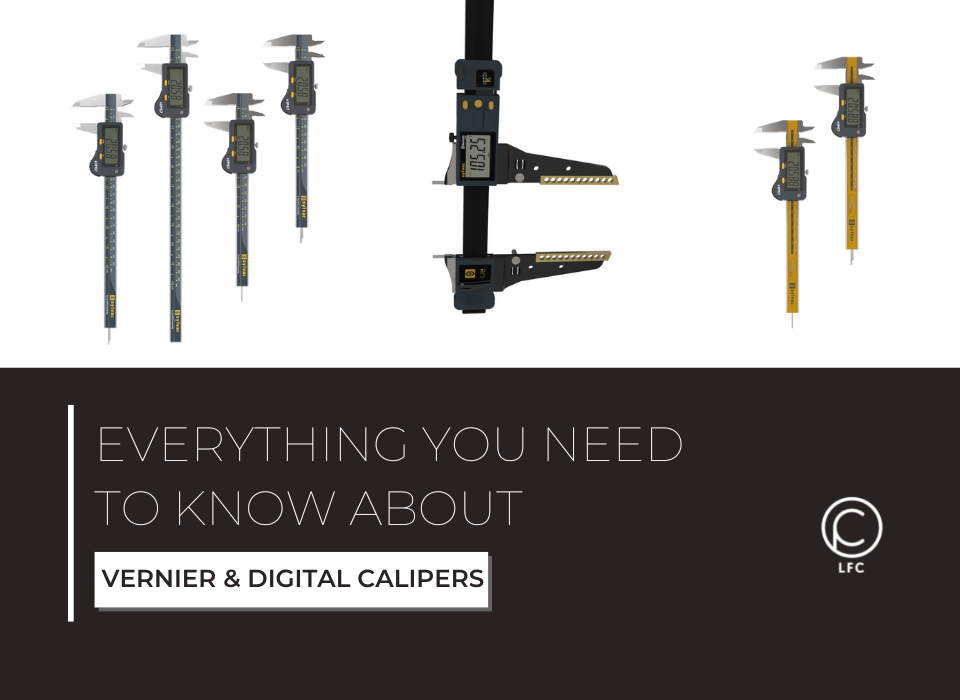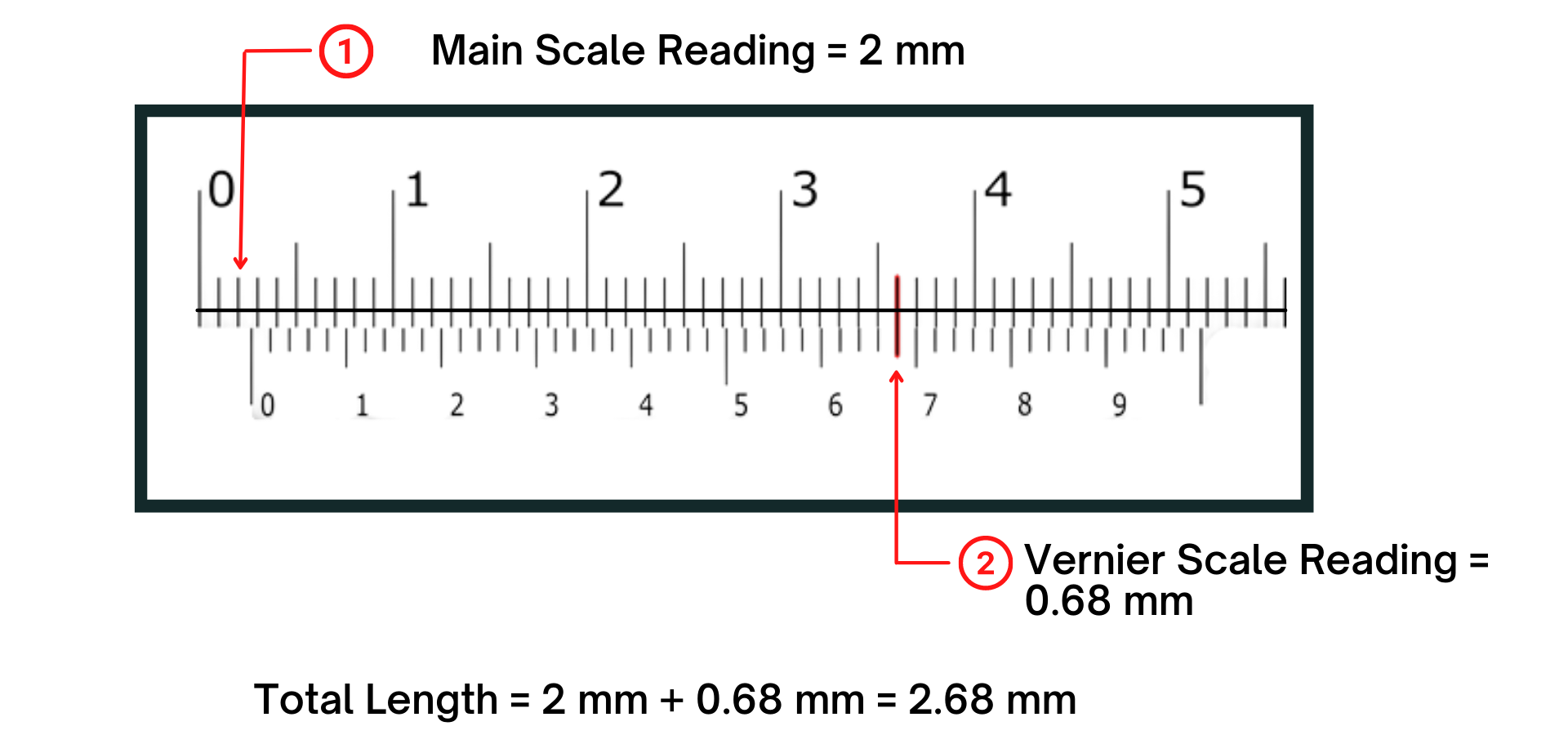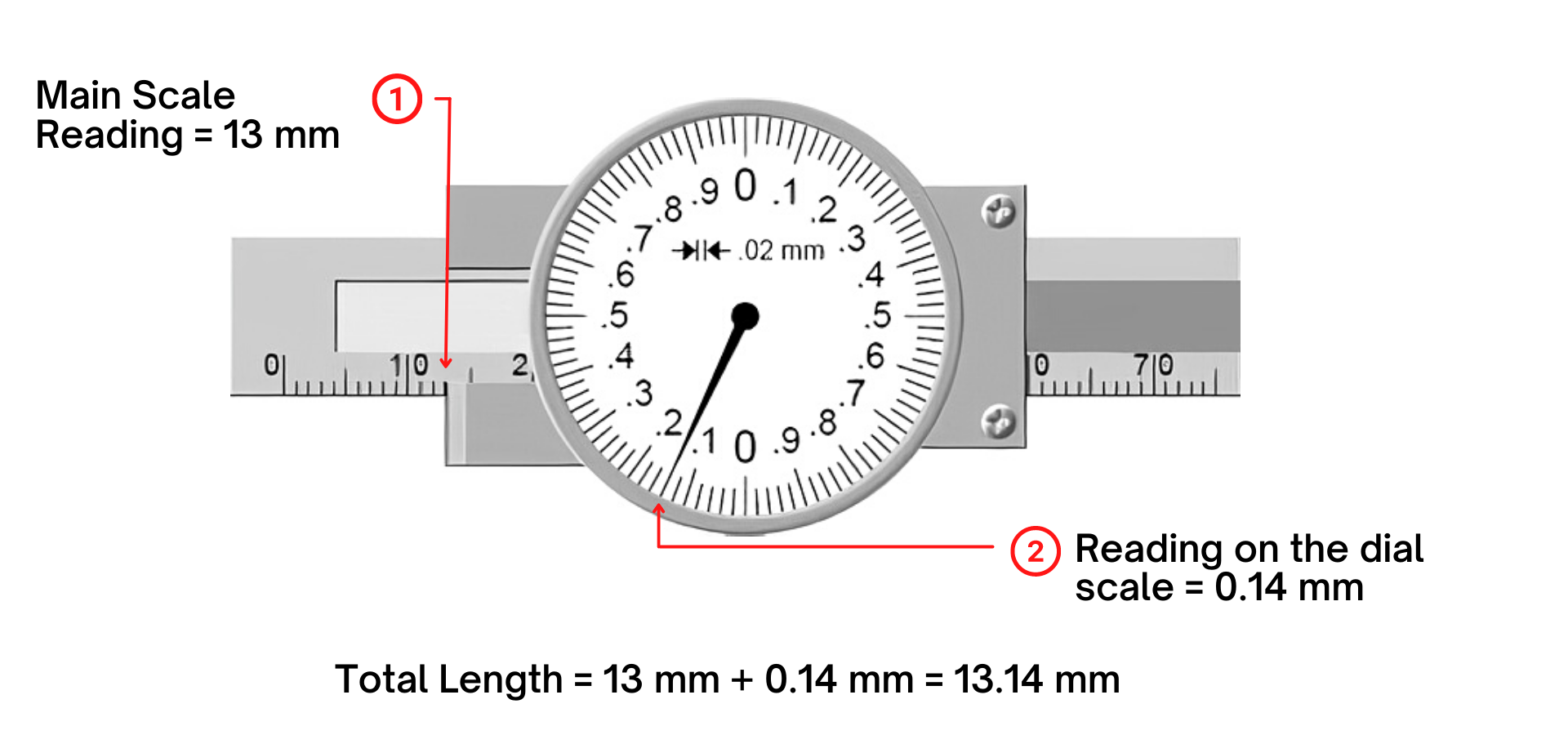
A caliper is a precision measuring instrument. It is a device used to measure the dimensions of an object, so you can make sure everything fits and can get the job done flawlessly. Calipers are divided into several types and examples are distinguished based on the reading method.
What are calipers?
Calipers are precision measuring tools that have the flexibility to measure various dimensions of an object with good accuracy. Caliper accuracy (resolution) ranges from 0.1 to 0.02 mm. The measurement range is from 0 to 15 mm or 6 inches. Calipers are also known as linear measuring tools. Calipers are usually made of steel. However, sometimes it can be made of other materials like carbon (plastic).
What are calipers used for?
Calipers are used to measure various dimensions such as thickness, outer diameter, inner diameter, length, width, and depth of an object easily and accurately. You can also use calipers to measure depth. The caliper is equipped with a thin stick (depth rod) on the back which serves to measure the depth of an object or hole.
Parts of a caliper
The main parts of the caliper are as follows:

- The internal jaw is a part of the caliper for measuring internal dimensions such as internal diameter.
- The external jaw is a caliper surface to secure the object to measure its external dimensions such as length, thickness, outside diameter and width.
- The locking screw is the part of the caliper which can be turned if needed to tighten the object being measured or to hold the object from moving.
- The upper vernier scale is part of the vernier scale in inches.
- The lower vernier scale is part of the vernier scale in metric units.
- The primary scale is the one marked in inches and metrics.
- The depth rod is the part of the caliper to measure the depth of an object or hole.
Types of Calipers
1. Vernier Caliper
A vernier caliper is a type of caliper for making highly accurate linear measurements using two graded scales: a main scale similar to a ruler and a vernier scale that slides parallel to the main scale.
How to read values off a vernier caliper:

The way to read a vernier caliper is to find the 0 position on the vernier scale and take note where it is on the main scale. In the image above (indicated by No.1), the 0 is between 2 mm and 3 mm so the result will be in the 2-3 mm range.
Then find the parallel line between the vernier scale and the main scale (indicated by No.2). The number of vernier lines that are most precisely parallel to the lines on the main scale is 0.68 mm. The measurement result is the sum of the main scale readings plus the vernier scale readings, in this case 2.68 mm.
2. Dial Caliper
A dial caliper works like a vernier caliper in that it has two sets of jaws, a slider, and a scale for measuring. The difference is that the measurement is not read on the vernier scale but on the dial indicator.
How to read values off a dial caliper:

To read the dial caliper, first read the scale to the left of the dial indicator according to the straight line that is passed. Then, read the scale on the dial indicator indicated by the needle and add up the two scales so that in the image above the measurement results are 13.14 mm.
3. Digital Calipers
The digital caliper or digital caliper is the easiest to read of the other types of calipers, as it replaces the analog dial with a digital display. This electronic measuring instrument works by using a linear code that is displayed on the screen for easy reading.
How to read values off a digital caliper:
It is easier to read values off a digital caliper. We will not be requiring mathematical calculations because the values are simply displayed on the screen. Many digital calipers let you choose between metric and imperial measurements, and they can be displayed as millimeters, centimeters, or inches.
Caliper Advantages and Disadvantages
A. Advantages of Calipers
1. Accuracy and precision: The first advantage of calipers is that they provide accurate and precise readings.
2. Versatility: Calipers are versatile instruments which can be used for a variety of purposes. They are typically used for internal, external, and depth measurement.
3. Durability: Since the calipers are made with strong materials such as stainless steel, they have long tool life.
4. No extra scale needed: The measurement on a caliper can be read directly due to its fixed and movable scale. They do not require a separate scale to take measurements.
5. Price: We can easily find vernier and digital calipers on the market at affordable prices.
B. Disadvantages of Calipers
1. Chance of error / human error: There is a possibility of an error in reading the vernier scale due to an inaccurate scale reading angle for inexperienced users.
2. Takes time to read: When we are reading measurement values from a vernier and dial caliper, we are unable to see the measurement directly. As explained above, we need to compute the values of the vernier graduation and dial scale to get the complete measuring value. Of course, this is not the case if we choose to use digital calipers, where readings are fed directly to the lcd screen of the caliper.
3. Possibility of parallax error: When using vernier calipers, the reading taken between two different people might differ. Parallax error can sometimes occur. This inaccuracy results from the eye being positioned incorrectly during measurement, particularly at an angle to the caliper's markings.
Range of Calipers Available at LFC
1. Sylvac Digital Micron Caliper S_Cal EVO
Sylvac Digital Micron Caliper S_Cal EVO is the only caliper in the market that has a resolution of 0.001 mm. The body is made of high-quality material with an ergonomic design. It comes with a large LCD display and integrated Bluetooth to communicate with your devices.
2. Sylvac Digital Bluetooth Caliper
The Sylvac S_Cal EVO SMART is a digital caliper that is integrated with Bluetooth for smart data transmission. This is a high-quality ergonomic caliper with IP67 certification, making it safe for use in harsh working environments with direct contact to coolant, oil, water, and chemicals.
2. Moore & Wright Plastic Dial Caliper CDP Series
The CDP Series Dial Calipers are the ultimate digital calipers for fabricators of mechatronics, aeronautical parts, magnetic speakers, capacitors, sensors, aerospace, semiconductors, and more. With this series, you no longer need to worry about heat transfer, magnetic fields, and general distortion as you might experience with regular metal calipers.
4. Moore & Wright Workshop Vernier Caliper 100 Series
The Moore & Wright Workshop Vernier Caliper 100 series is a basic linear measuring tool commonly used as a precision instrument that can be used to accurately measure internal and external distances within your economic budget.
5. Sylvac Ultra-Light Caliper UL4
Sylvac Ultra Light Caliper UL4 special jaws C is made of a lightweight material (3 meters range only weighs 3.3kg) and has a well-balanced design by utilizing state-of-the-art material technology. Sylvac Ultra Light Caliper UL4 special jaws C is equipped with the latest Bluetooth transfer technology, allowing for measurement data to be sent quickly with a click of a button directly to any devices such as PC, tablets, and smartphones. This caliper truly shines when used in the fabrication of gas pipes, inspection jigs and any other measurement of large and bulky workpieces.
LFC is the exclusive distributor for Sylvac in Singapore and Indonesia. Contact us for a demonstration and find out how the Bluetooth digital caliper can help you with your quality control tasks. Also visit our Facebook, Instagram, YouTube and LinkedIn pages to get the latest updates about other industrial equipment.











